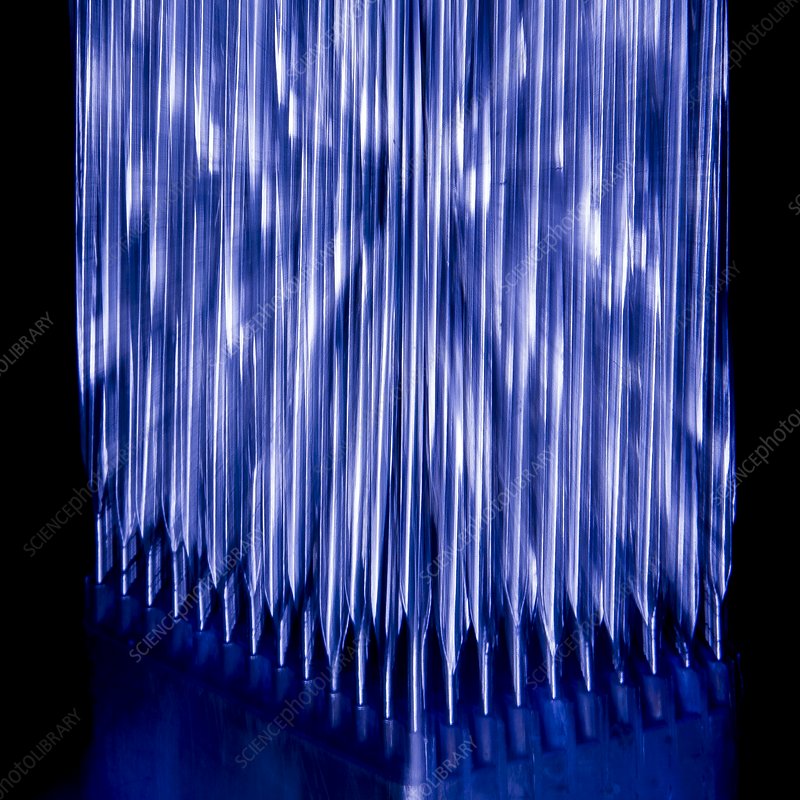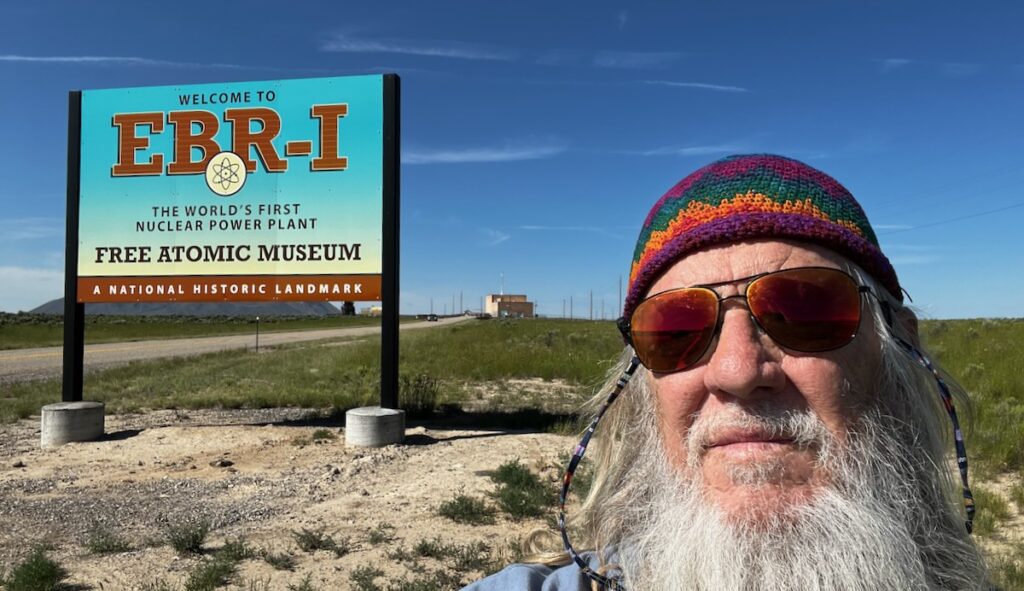While studying mechanical engineering at Cal Poly, I enjoyed courses in Thermodynamics. Engineers use many different thermodynamic reactions to power everything from an early steam locomotive to a space shuttle flying in space.

An essential ingredient in thermo is energy, typically in the form of heat. As told elsewhere, I became interested in nuclear fission as an energy source when I discovered a small nuclear reactor on campus.
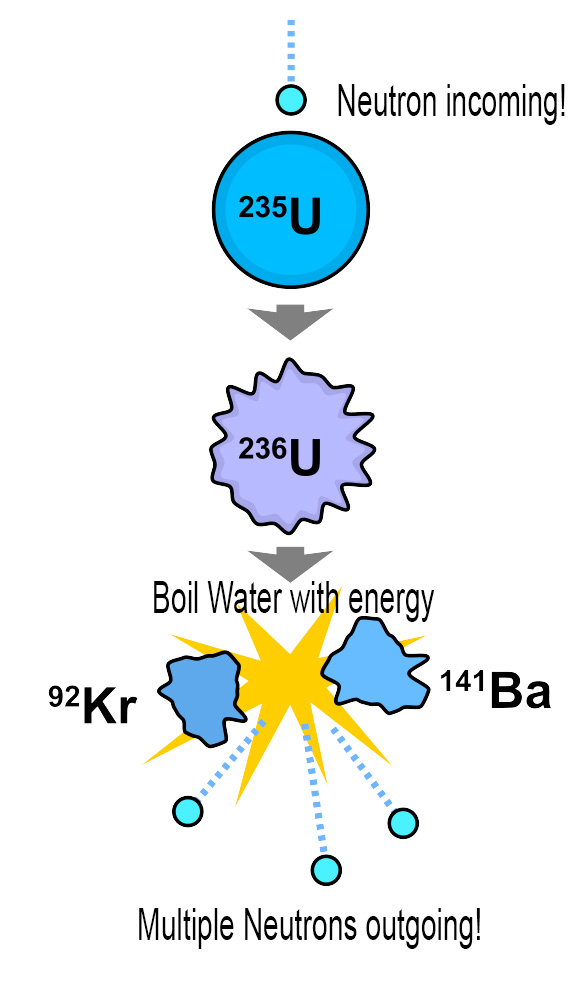
Nuclear power, it turns out, is all about neutrons. The neutron is big, heavy, and carries no electrical charge (to push other charged particles away). Think of them as bowling balls. An element like Uranium is full of these suckers.
Nuclear fission can happen when an unstable isotope radioactively decays, producing a free neutron. It can, in turn, wack into a Uranium atom and cause a fission event that releases multiple neutrons. You can achieve a chain reaction if enough of these neutrons fly around. This is the Neutron Flux, and I analyzed it for my graduate thesis.
You control the chain reaction by slowing down some neutrons with water or more exotic materials like liquid sodium. All of this nonsense produces energy that can boil water, run an electric generator, and charge your iPhone.
Oh, Noodly One – this was the ticket for me. As complicated as can be. If I could learn all this happy horseshit, I would definitely become a rock star! 🤩
Now for the really cool part. Specific fission reactions allow you to make fuel for the more common nuclear power plant. The Experimental Breeder Reactor – EBR-1 – does just that. It was the first nuclear reactor to produce power and prove you could breed fissile materials.
EBT-1
I first learned of the museum on our trip in 2021. On our way to visit Craters of the Moon, I noticed it, only to subsequently discover it was closed due to COVID. When I saw we were not far away from Arco on our slide south, I contacted them, and they assured me they were open for the summer.
Experimental Breeder Reactor #1 was the first nuclear power plant to produce electricity. It was also built to prove you could use a nuclear reactor to enrich isotopes of Uranium and run other nuclear power plants (or build high-yield atomic weapons). It used an exotic nuclear fuel cycle requiring a primary liquid sodium and potassium mixture coolant. If this stuff gets anywhere near water, it explodes.
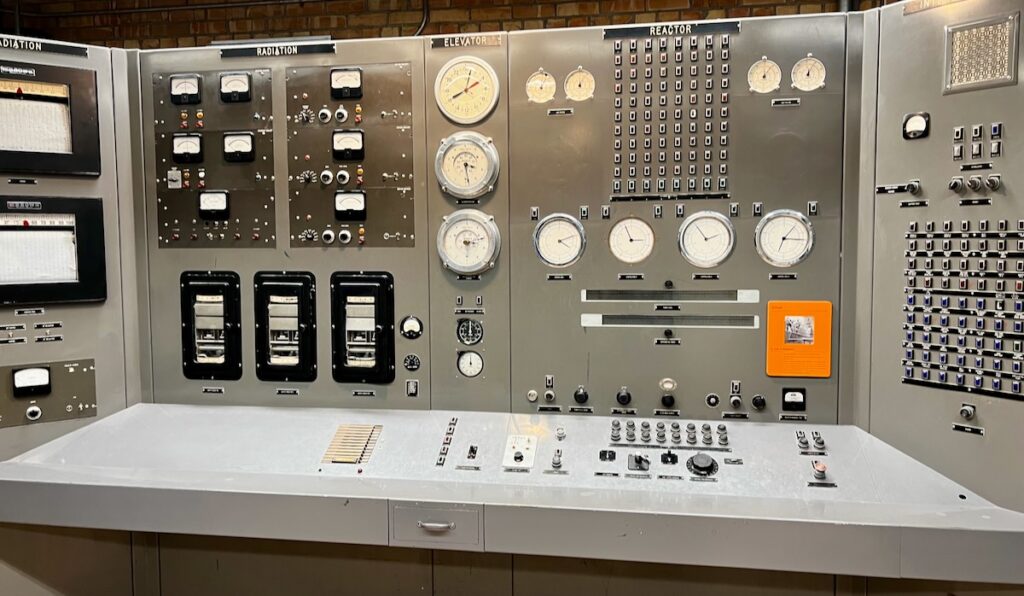
The tour was excellent, taught by a student studying communications at Washington State University. More weird fucking karma, as one of Looney Tunes’ daughters studied the exact same thing there some 15 years ago.
Some very cool stuff here.
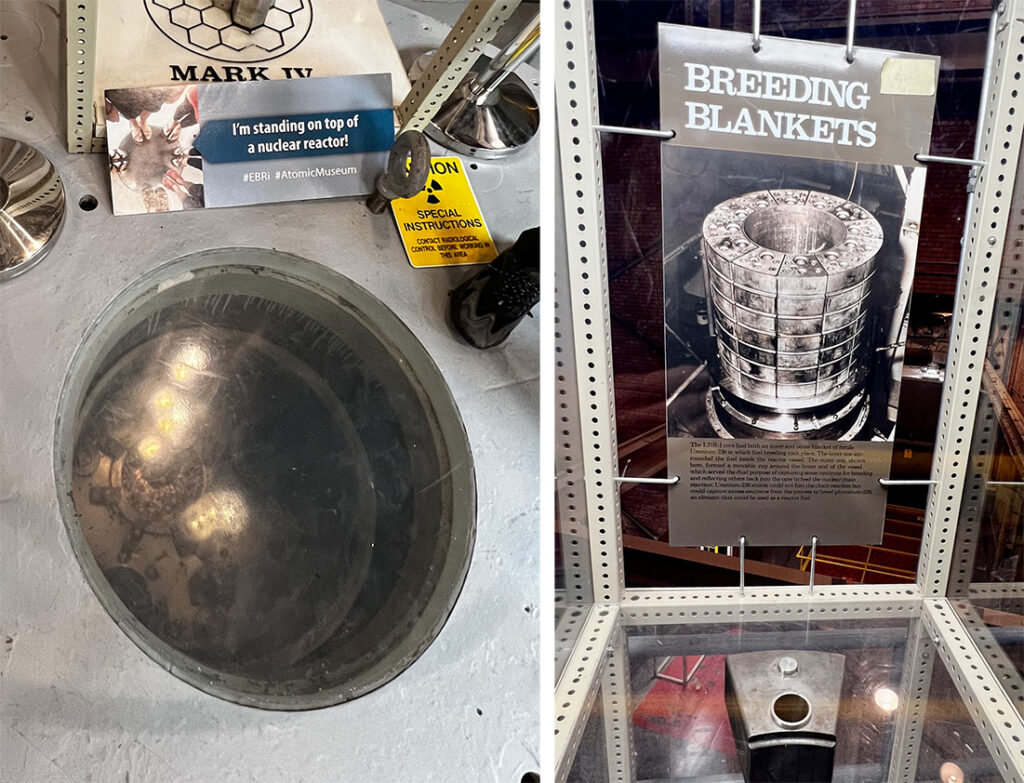
You could stand right on top of the reactor with a view into the core.
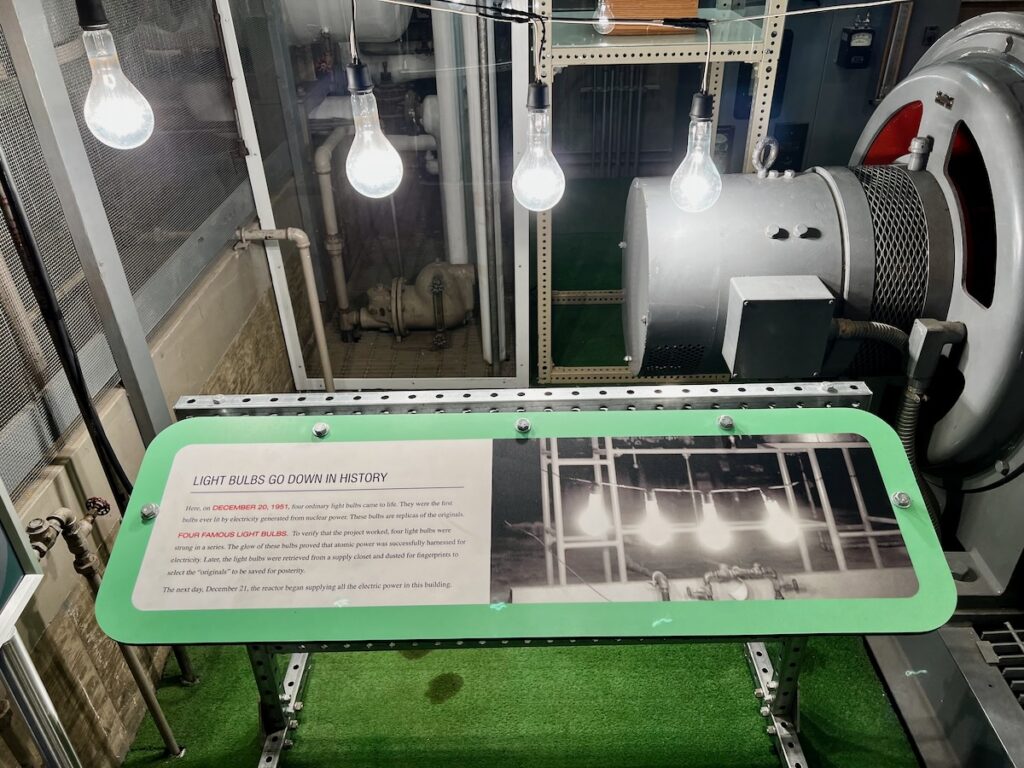
The first test of the complete power plant lit four light bulbs in 1951. This had never been done before.
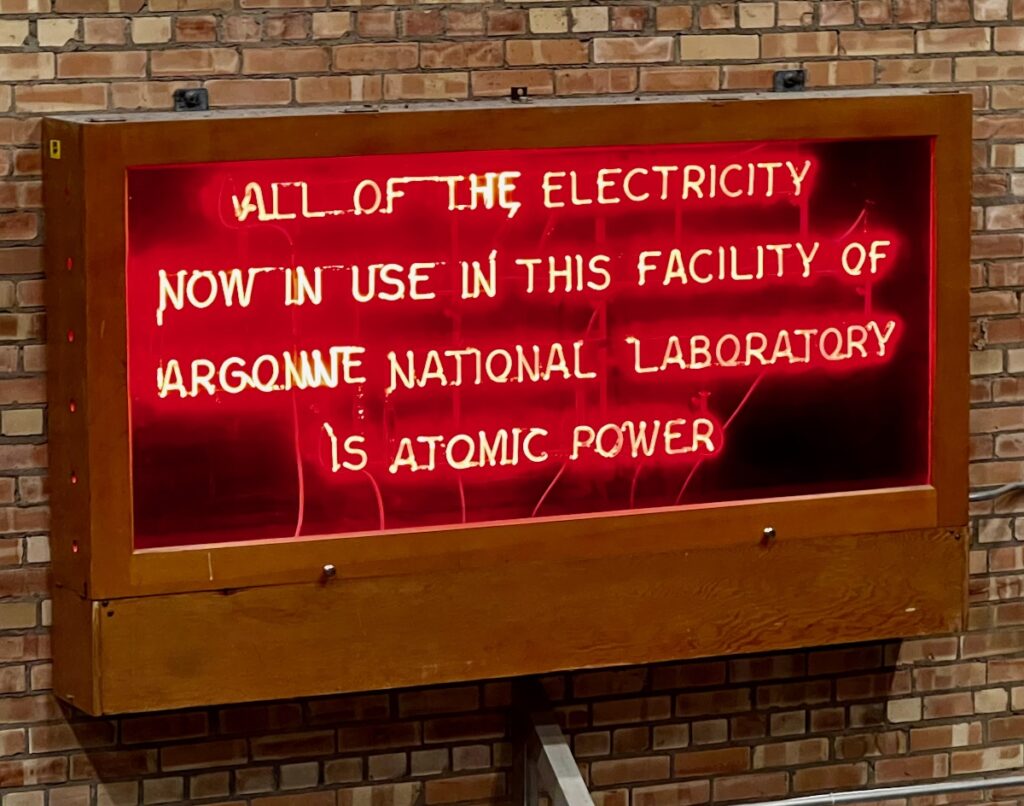
Several years later, they were able to power the complete facility.
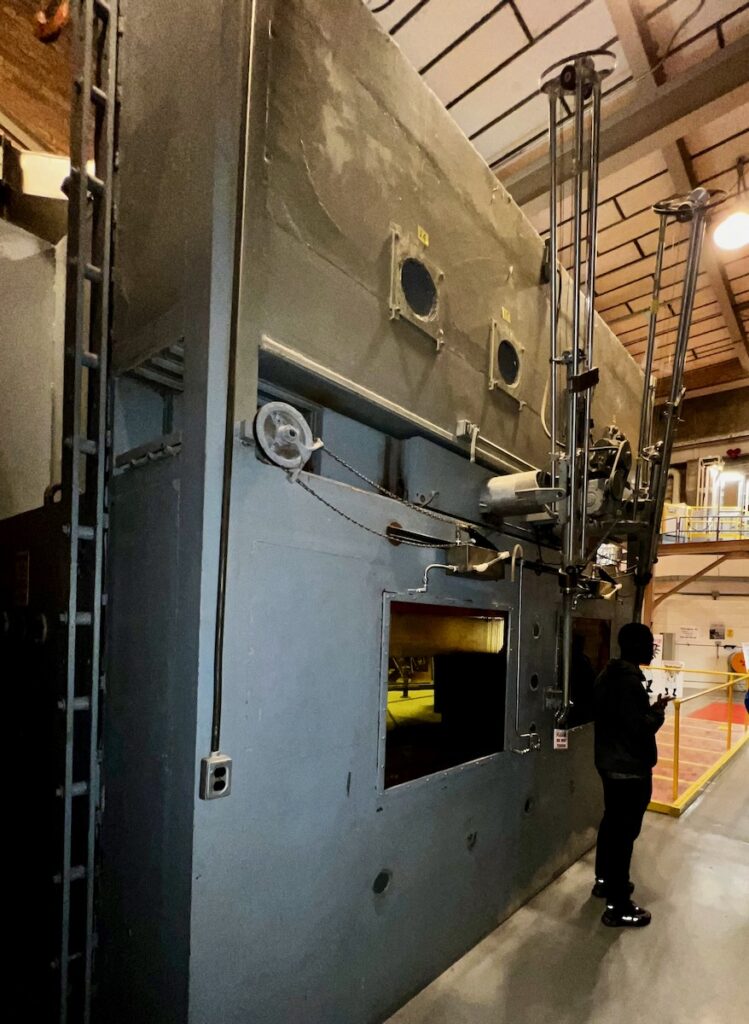
A hot chamber manipulates the spent fuel to remove the enriched Uranium mechanically. It had a 39-inch thick window comprising 34 layers of leaded glass to protect the user.
I was more than surprised to come across a scale model of the reactor I was involved with during my graduate studies. The LOFT facility was used to simulate the loss of primary coolant. I visited it once during my studies.
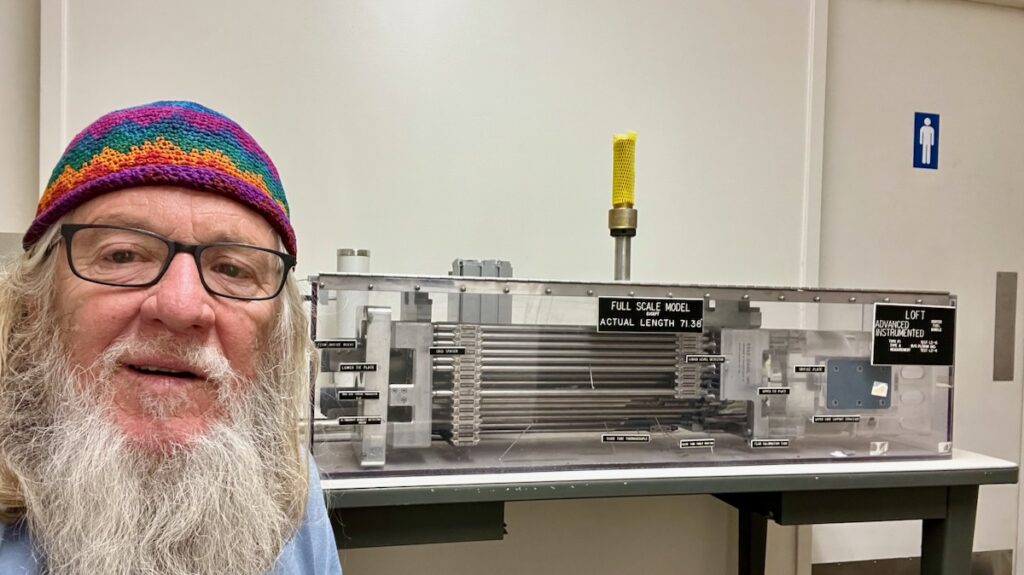
This piece of hardware was out of place in the museum, which is probably why it’s located outside the restrooms 🤣. Coincidence? I think not!
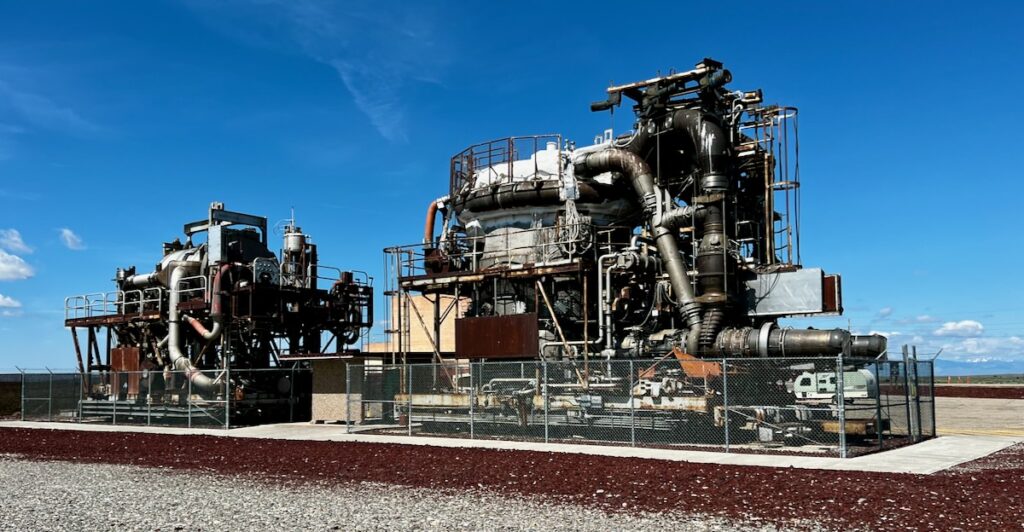
Outside the building were two experiments used to study the feasibility of a nuclear-powered aircraft—these two units we used to test that theory. Kennedy ultimately canceled the program. The professor I studied under in graduate school had worked on a nuclear-powered rocket engine in Nevada in the 1960s. In the 1950s, nuclear power was certainly viewed as manna from the gods! There was seemingly nothing it couldn’t do. It also proved to have a stigma that was extremely difficult to shake.
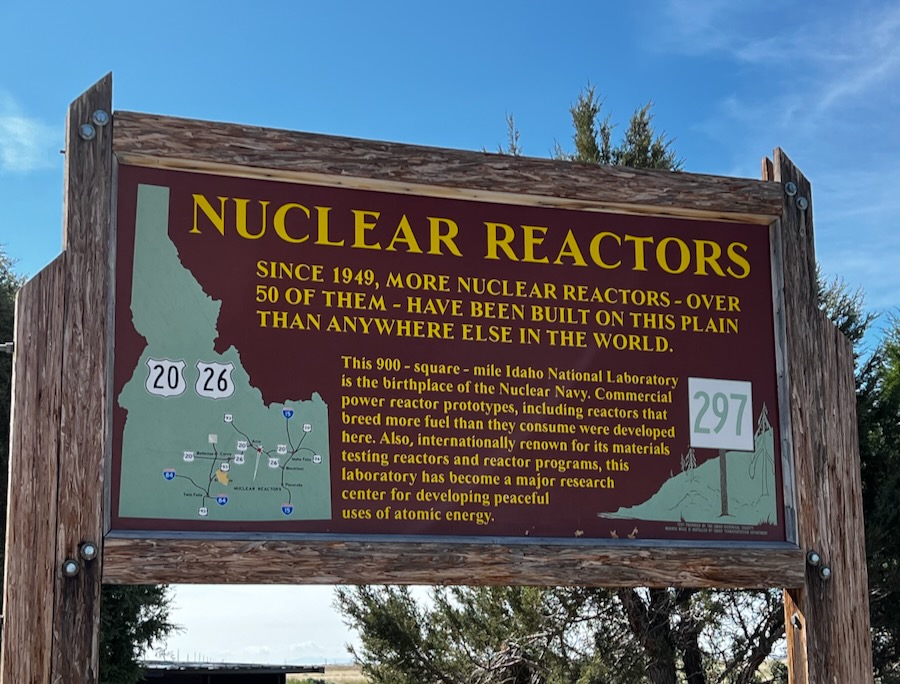
I am glad I could make it back here and tour the museum. When I graduated from Cal Poly, I talked to the Navy about becoming a Navy Nuke. They told me that after basic training, they ship you off to Idaho to learn how to run a nuclear reactor.
Idaho, how odd, I thought. If I only knew…
I returned by lunchtime and spent the afternoon doing long overdue housecleaning on the trailer. The weather was nice, and we enjoyed our respite before starting our final leg of the journey to the Southwest.


